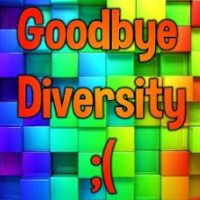Progressive, Diverse San Francisco Expected to Be Majority White by 2014

Rapid economic changes in San Francisco are not only visible in its density build-out and gentrification. The city is growing whiter and by 2040 Caucasians will be the majority, moving in an opposite direction from the rest of the five-county Bay Area.
A new report (pdf) by PolicyLink and the USC Program for Environmental and Regional Equity (PERE), profiles the Bay Area’s growing income inequality amid the region’s economic boom and projects a white San Francisco bastion of high-wage earners in 25 years, surrounded by increasing diversity and disparity.
Marin County will still have a majority of white residents, but like Contra Costa, Alameda and San Mateo counties, it is growing more diverse. Thirty-five years ago, 66% of the region was white and they were the majority in each of the counties.
People of color are now 58% of the population and are expected to be 69% by 2040. San Francisco should be 52% white by then.
“It’s startling because the city’s diversity and identity as a progressive, inclusive city is seriously at-risk,” PolicyLink’s Sarah Treuhaft, a San Francisco resident, told CityLab. “In fact, an honest look at the data show it is becoming a mirage.”
The result, according to the report, is that “while the Bay Area is booming, rising inequality, stagnant wages, and persistent racial inequalities place its long-term economic future at risk.”
Income inequality and the hollowing out of the middle class are profoundly transforming the region. The Bay Area ranked 45th worst out of 150 of the nation’s largest regions for income inequality in 1979, as measured by the Gini coefficient. Now it ranks 14th.
Full-time wage earners in the lower 10th percentile have suffered a 10% decline in real earned income and those in the lower 20th percentile have dropped 5%. Those numbers are actually better than the national average declines of 11% and 10%, respectively. But the gap between lower-income workers in the Bay Area and those at the other end is much larger that nationally because Bay Area rich folks got a whole lot richer than the rest of their U.S. counterparts.
Bay Area wage earners in the 90th percentile saw a 50% increase, compared to 15% nationally, and local workers in the 80th percentile jumped 38%, compared to just 4% nationally. The middle group at 50th percentile was up 13% in the Bay Area and down 8% nationally.
Wage disparities are also evident between racial/ethnic groups. Median hourly wages declined between 2000 and 2012 for African Americans and Latinos, but increased for Native Americans, Asians and, of course, whites.
White hourly wages grew from $30.30 to $32.50, while Latino earnings dropped from $19.60 to $17 and African Americans declined from $22.70 to $22.
People with middle-class incomes fell from 40% to 36% since 1979, while lower-income households grew from 30% to 38%. The report’s authors calculated middle class incomes to be between $51,200 and $123,007.
The report notes that education is a “leveler,” and that “unemployment decreases and wages increase with higher education attainment.” Three pages later, it lists, in passing, one of the reasons for skepticism about future structural, societal change—education services are still among the lowest-paid industries in the Bay Area, despite being one of the few low-end jobs that actually experienced a gain (28%) since 1990.
–Ken Broder
To Learn More:
S.F. Could Be Much Whiter in 25 Years, While the Rest of Region Gets More Diverse (by Patricia Yollin, KQED)
A Startling Map of How Much Whiter San Francisco Will Be in 2040 (by Tanvi Misra, CityLab)
San Francisco and Rwanda Are Equals When It Comes to Income Inequality (by Ken Broder, AllGov California)
An Equity Profile of the San Francisco Bay Area Region (PolicyLink and USC Program for Environmental & Regional Equity) (pdf)
- Top Stories
- Controversies
- Where is the Money Going?
- California and the Nation
- Appointments and Resignations
- Unusual News
- Latest News
- California Forbids U.S. Immigration Agents from Pretending to be Police
- California Lawmakers Urged to Strip “Self-Dealing” Tax Board of Its Duties
- Big Oil’s Grip on California
- Santa Cruz Police See Homeland Security Betrayal in Use of Gang Roundup as Cover for Immigration Raid
- Oil Companies Face Deadline to Stop Polluting California Groundwater





